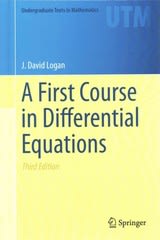Question
Alice (A), Bob (B) and Chris (C) pass a stochastic models textbook to each other. When B gets the book, he sets up two independent
Alice (A), Bob (B) and Chris (C) pass a stochastic models textbook to each other. When B gets
the book, he sets up two independent \alarm clocks," which ring after independent exponentially
distributed times: alarm clock B-A is distributed as EXP(2), i.e. has exponential distribution with
parameter 2 (mean 1/2); alarm clock B-C is distributed as EXP(5). If B-A rings rst, at that
time B passes the book to A; if B-C rings rst, at that time B passes the book to C. When C get
the book, he behaves analogously, except his alarm clocks to pass the book to A or B are EXP(5)
and EXP(3), respectively. Alice (A) behaves dierently. When she gets the book, she sets a rst
independent alarm clock H1 which is distributed as EXP(4). When H1 rings, A with probability
1/4 passes the book to C, and with probability 3/4 sets another independent alarm clock H2 which
is distributed as EXP(4). Finally, when H2 rings, Alice passes the book to either B or C with equal
probabilities 1/2.
Can this process be modeled as a CTMC? If so, what is the state space and transition rates
(the Gij's)?
In the long-run, what is the fraction of time that Alice holds the book?
Step by Step Solution
There are 3 Steps involved in it
Step: 1

Get Instant Access to Expert-Tailored Solutions
See step-by-step solutions with expert insights and AI powered tools for academic success
Step: 2

Step: 3

Ace Your Homework with AI
Get the answers you need in no time with our AI-driven, step-by-step assistance
Get Started


